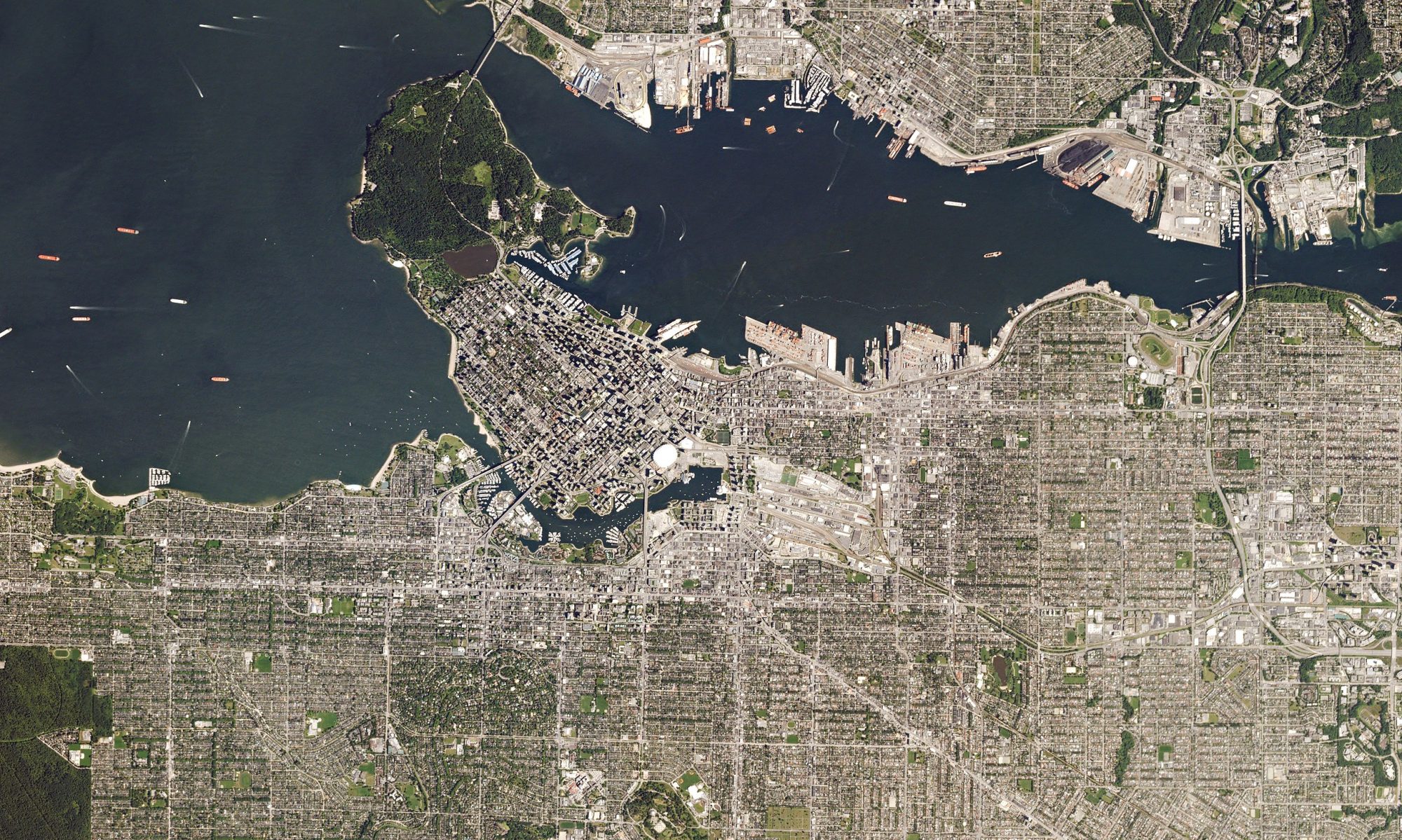Part I. Intersection Analysis
Road-width and buffer creation information are approximations of the scope of intersections. Aside from in-field observations which involve inputs of physical street width, average speed measurements of road users, it is hard to determine on-paper where an actual buffer for each intersection should begin. There are also several aspects of this analysis that should be more closely looked at:
- Sampling time frame: The choice of 2019 to present (to 2020 for ICBC Collision data) is intended to reflect any physical changes in infrastructure along bikeways or roads. Given the global (in many senses) effects of the COVID-19 pandemic from 2020 to the present day (as of Dec 2021), this can affect transportation choices and behaviours as a whole.
- ICBC Reported Crashes: This is inherently incomplete as it only includes reported biking collisions involving vehicles. Also, prior research has suggested that ICBC data processing tends to assign crashes to the nearest intersections or midblock locations, instead of a specific coordinate (Branion-Calles et al., 2017). This results in approximately 92% of reported collisions occurring at intersections, while reports from emergency room admissions (admittedly only for more severe incidents) tallies a figure closer to 50% of all cyclist/vehicle collisions occurring at intersections (Branion-Calles et al., 2017). As a result, ICBC data may over-represent collisions plotted at intersections.
- Bike Maps Incidents: This dataset is crowd-sourced and manually inputted into ArcGIS Pro by the author of this project, increasing the subjective of locations (unfortunately, these user-inputted incident coordinates are not publicly available for direct import into ArcGIS Pro). Studies on the reporting of data indicate that contributors to this database are skewed towards regular bike commuters, which may not be detrimental in this analysis but could lower the generalizability of these results to non-commuting cyclists/less regular cyclists. (Branion-Calles et al., 2017). Moreover, the nature of the manual inputs by users may reinforce this demographic sampling due to growth of the website through primarily word of mouth.
Part II. Route Analysis
The choice of a 300m buffer is based on literature, but in practice, the distance people are willing to walk may vary depending on weather, topography, and road conditions. The generation of a single average slope value for each specific segment is another inherent limitation performed for the sake of simplifying analysis, as segments vary in length and in slope.
Selection of destinations/origins as schools, commercial/comprehensive development zones, and rapid transit stations is subjective. Other destinations can be incorporated, based on demographic and census data. Also, use of up-to-date census data (2021 Canadian Census Data will be available in 2022), or detailed studies/interviews/case studies may allow for more nuanced analyses of cycling origin and endpoint data.
- Multiple Criteria Evaluations: Transformation factors of criteria to visually match the 300m buffers for the selected destinations is subjective. The rationale behind the choices of transformation (i.e. MSSmall vs. Small) is also subjective based on a theorized rationale for each of these types of commuters. Weighting of the first MCE (Coverage) was done evenly between all four factors. The weighting for the second MCE (Connectivity) can be considered to be more subjective. There is a lack of research quantifying the importance of specifically AAA segment connections in commuter preference and the expansion of bike networks.
